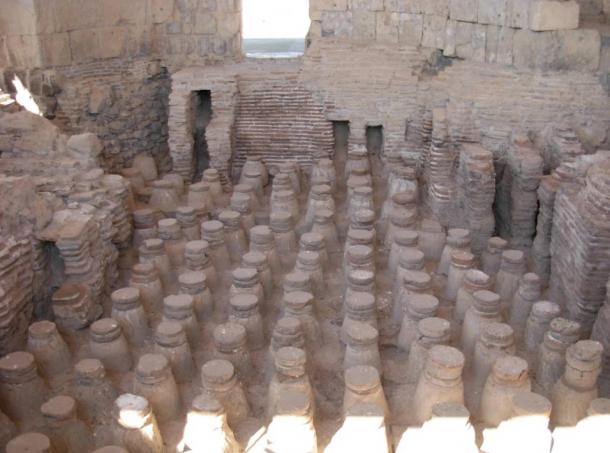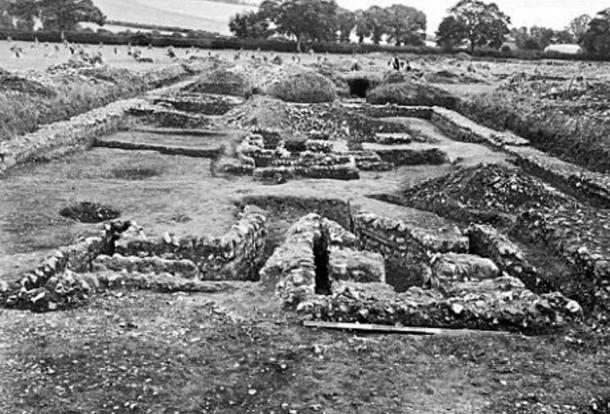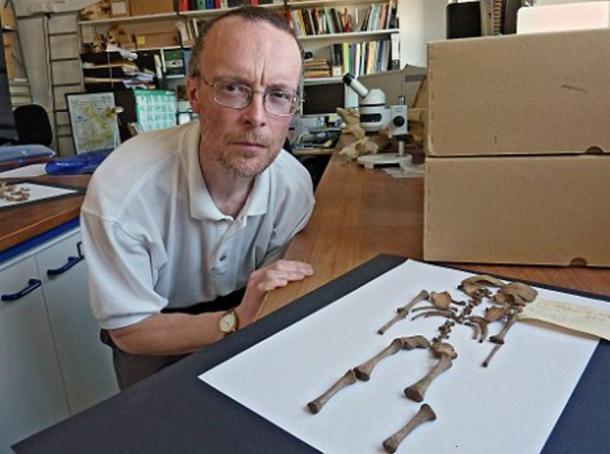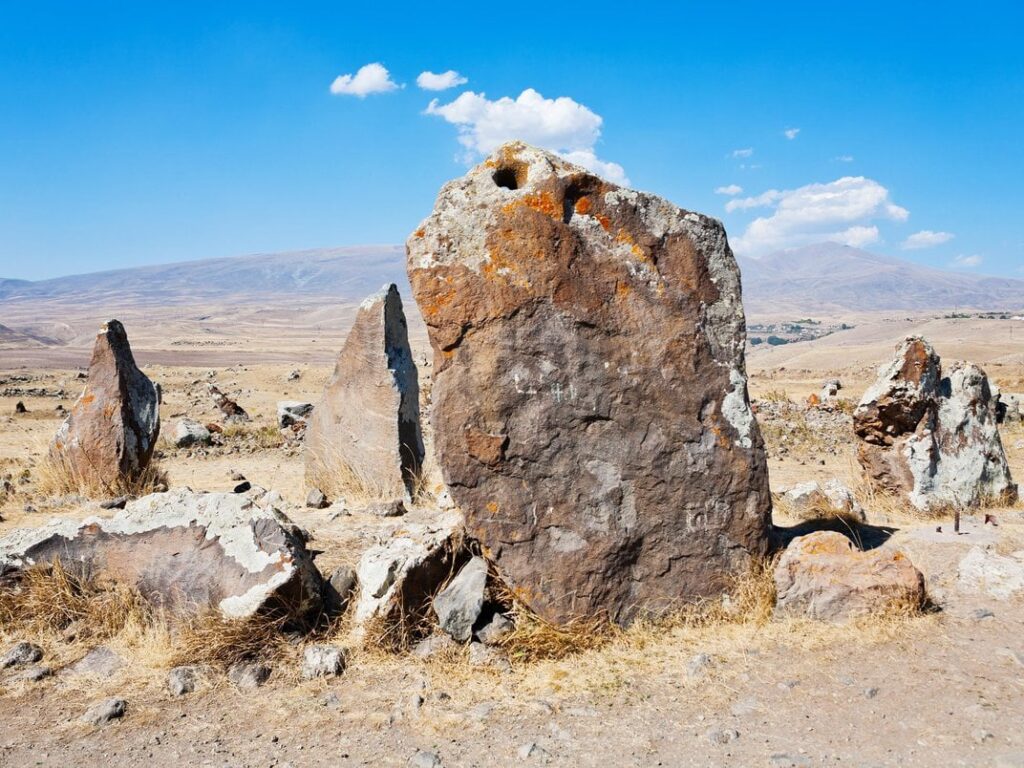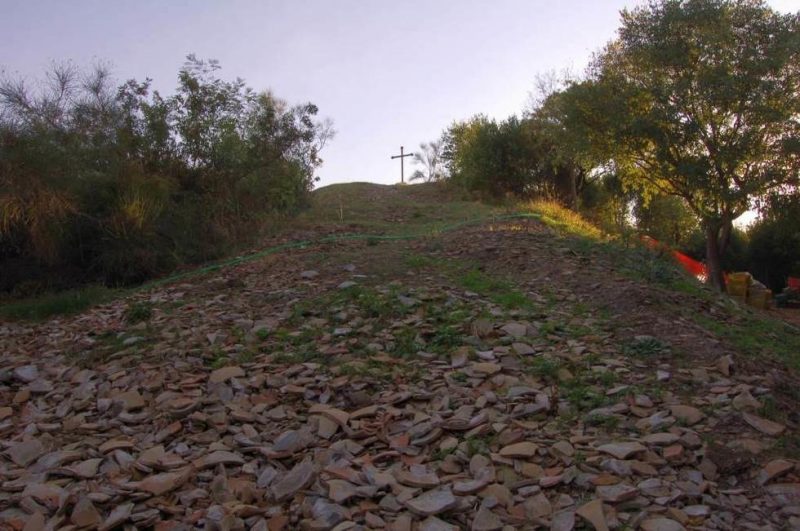This 3,500-Year-Old Greek Tomb Upended What We Thought We Knew About the Roots of Western Civilization
They had been digging for days, shaded from the Greek sun by a square of green tarpaulin slung between olive trees. The archaeologists used picks to break the cream-colored clay, baked as hard as rock, until what began as a cluster of stones just visible in the dirt became four walls in a neat rectangle, sinking down into the earth.

Little more than the occasional animal bone, however, came from the soil itself. On the morning of May 28, 2015, the sun gave way to an unseasonable drizzle. The pair digging that day, Flint Dibble and Alison Fields, waited for the rain to clear, then stepped down into their meter-deep hole and got to work. Dibble looked at Fields. “It’s got to be soon,” he said.
The season had not started well. The archaeologists were part of a group of close to three dozen researchers digging near the ancient Palace of Nestor, on a hilltop near Pylos on the southwest coast of Greece. The palace was built in the Bronze Age by the Mycenaeans—the heroes described in Homer’s epic poems—and was first excavated in the 1930s.
The dig’s leaders, Jack Davis and Sharon Stocker, husband-and-wife archaeologists from the University of Cincinnati, in Ohio, had hoped to excavate in a currant field just downslope from the palace, but Greek bureaucracy and a lawyers’ strike kept them from obtaining the necessary permits. So they settled, disappointed, on a neighboring olive grove.
They cleared the land of weeds and snakes and selected a few spots to investigate, including three stones that appeared to form a corner. As the trench around the stones sank deeper, the researchers allowed themselves to grow eager: The shaft’s dimensions, two meters by one meter, suggested a grave, and Mycenaean burials are famous for their breathtakingly rich contents, able to reveal volumes about the culture that produced them.
Still, there was no proof that this structure was even ancient, the archaeologists reminded themselves, and it might simply be a small cellar or shed.
Dibble was clearing earth from around a large stone slab when his pick hit something hard and the monotony of the clay was broken by a vivid flash of green: bronze.
The pair immediately put down their picks, and after placing an excited call to Davis and Stocker they began to carefully sweep up the soil and dust. They knew they were standing atop something substantial, but even then they did not imagine just how rich the discovery would turn out to be.“It was amazing,” says Stocker, a small woman in her 50s with dangling earrings and blue-gray eyes. “People had been walking across this field for three-and-a-half-thousand years.”
Yet remarkably little is known of the beginnings of Mycenaean culture. The Pylos grave, with its wealth of undisturbed burial objects and, at its bottom, a largely intact skeleton, offers a nearly unprecedented window into this time—and what it reveals is calling into question our most basic ideas about the roots of Western civilization.

In The Iliad, Homer tells of how Agamemnon, king of Mycenae, led a fleet of a thousand ships to besiege the city of Troy. Classical Greeks (and Romans, who traced their heritage to the Trojan hero Aeneas) accepted the stories in The Iliad and The Odyssey as a part of their national histories, but in later centuries scholars insisted that the epic battles fought between the Trojan and Mycenaean kingdoms were nothing more than myth and romantic fantasy. Before the eighth century B.C., archaeologists argued, societies on the Greek mainland were scattered and disorganized.
Today, Blegen’s work at Pylos is continued by Stocker and Davis (his official title is the Carl W. Blegen professor of Greek archaeology). Davis walks with me to the hilltop, and we pause to enjoy the gorgeous view of olive groves and cypress trees rolling down to a jewel-blue sea.
Davis has white-blond hair, freckles and a dry sense of humor, and he is steeped in the history of the place: Alongside Stocker, he has been working in this area for 25 years. As we look out to sea, he points out the island of Sphacteria, where the Athenians beat the Spartans during a fifth-century B.C. battle of the Peloponnesian War.
Behind us, Nestor’s palace is surrounded by flowering oleander trees and is covered with an impressive new metal roof, completed just in time for the site’s reopening to the public in June 2016 after a three-year, multimillion-euro restoration. The roof’s graceful white curves protect the ruins from the elements, while a raised walkway allows visitors to admire the floor plan.
The stone walls of the palace now rise just a meter from the ground, but it was originally a vast two-story complex, built around 1450 B.C., that covered more than 15,000 square feet and was visible for miles. Visitors would have passed through an open courtyard into a large throne room, Davis explains, with a central hearth for offerings and decorated with elaborately painted scenes including lions, griffins and a bard playing a lyre.
The Linear B tablets found by Blegen, deciphered in the 1950s, revealed that the palace was an administrative center that supported more than 50,000 people in an area covering all of modern-day Messenia in western Greece. Davis points out storerooms and pantries in which thousands of unused ceramic wine cups were found, as well as workshops for the production of leather and perfumed oils.
This era, extending until the construction of palaces at Pylos, Mycenae and elsewhere, is known to scholars as the “shaft grave period” (after the graves that Schliemann discovered). Cynthia Shelmerdine, a classicist and renowned scholar of Mycenaean society at the University of Texas at Austin, describes this period as “the moment the door opens.”
It is, she says, “the start of elites coming together to form something beyond just a minor chiefdom, the very beginning of what leads to the palatial civilization only a hundred years later.” From this first awakening, “it really takes a very short time for them to leap into full statehood and become great kings on a par with the Hittite emperor. It was a remarkable thing to happen.”
Yet partly as a result of the building of the palaces themselves, atop the razed mansions of early Mycenaeans, very little is known of the people and culture that gave birth to them. You can’t just tear up the plaster floors to see what’s underneath, Davis explains. The tholos itself went out of use around the time the palace was built. Whoever the first leaders here were, Davis and Stocker had assumed, they were buried in this plundered tomb. Until, less than a hundred yards from the tholos, the researchers found the warrior grave.







Davis and Stocker disagree on where they were when they received Dibble’s call from the dig site. Stocker remembers they were at the team’s workshop. Davis thinks they were at the local museum. Dibble recalls that they were in line at the bank. Whichever it was, they rushed to the site and, Stocker says, “basically never left.”
About a week in, Davis was excavating behind the stone slab. “I’ve found gold,” he said calmly. Stocker thought he was teasing, but he turned around with a golden bead in his palm. It was the first in a flood of small, precious items: beads; a tiny gold birdcage pendant; intricately carved gold rings; and several gold and silver cups.
“Then things changed,” says Stocker. Aware of the high risk of looting, she organized round-the-clock security, and, apart from the Ministry of Culture and the site’s head guard, the archaeologists agreed to tell no one about the more valuable finds. They excavated in pairs, always with one person on watch, ready to cover precious items if someone approached.

And yet it was impossible not to feel elated, too. “There were days when 150 beads were coming out—gold, amethyst, carnelian,” says Davis. “There were days when there was one seal stone after another, with beautiful images. It was like, Oh my god, what will come next?!” Beyond the pure thrill of uncovering such exquisite items, the researchers knew that the complex finds represented an unprecedented opportunity to piece together this moment in history, promising insights into everything from religious iconography to local manufacturing techniques.
The discovery of a golden cup, as lovely as the day it was made, proved an emotional moment. “How could you not be moved?” says Stocker. “It’s the passion of looking at a beautiful piece of art or listening to a piece of music. There’s a human element. If you forget that, it becomes an exercise in removing things from the ground.”
Fragments of Ancient Life
From jewelry to gilded weapons, a sampling of the buried artifacts researchers are using to fill in the details about the social currents in Greece at the time the griffin warrior lived
Like any momentous archaeological find, the griffin warrior’s grave has two stories to tell. One is the individual story of this man—who he was, when he lived, what role he played in local events. The other story is broader—what he tells us about the larger world and the crucial shifts in power taking place at that moment in history.
Analyses of the skeleton show that this 30-something dignitary stood around five-and-a-half feet, tall for a man of his time. Combs found in the grave imply that he had long hair. And a recent computerized facial reconstruction based on the warrior’s skull, created by Lynne Schepartz and Tobias Houlton, physical anthropologists at the University of the Witwatersrand in Johannesburg, shows a broad, determined face with close-set eyes and a prominent jaw. Davis and Stocker are also planning DNA tests and isotope analyses that they hope will provide information about his ethnic and geographic origins.
And this has been the scholarly consensus ever since: The Mycenaeans, now thought to have sacked Knossos at around the time they built their mainland palaces and established their language and administrative system on Crete, were the true ancestors of Europe.
Significantly, weapons had been placed on the left side of the warrior’s body while rings and seal stones were on the right, suggesting that they were arranged with intent, not simply thrown in. The representational artwork featured on the rings also had direct connections to actual buried objects.
“One of the gold rings has a goddess standing on top of a mountain with a staff that seems to be crowned by a horned bull’s head,” says Davis. “We found a bull’s head staff in the grave.” Another ring shows a goddess sitting on a throne, looking at herself in the mirror. “We have a mirror.” Davis and Stocker do not believe that all this is a coincidence. “We think that objects were chosen to interact with the iconography of the rings.”

In their view, the arrangement of objects in the grave provides the first real evidence that the mainland elite were experts in Minoan ideas and customs, who understood very well the symbolic meaning of the products they acquired. “The grave shows these are not just knuckle-scraping, Neanderthal Mycenaeans who were completely bowled over by the very existence of Minoan culture,” says Bennet. “They know what these objects are.”
“I think we should all care about that,” says Shelmerdine. “It resonates today, when you have factions that want to throw everybody out [of their countries]. I don’t think the Mycenaeans would have gotten anywhere if they hadn’t been able to reach beyond their shores.”







